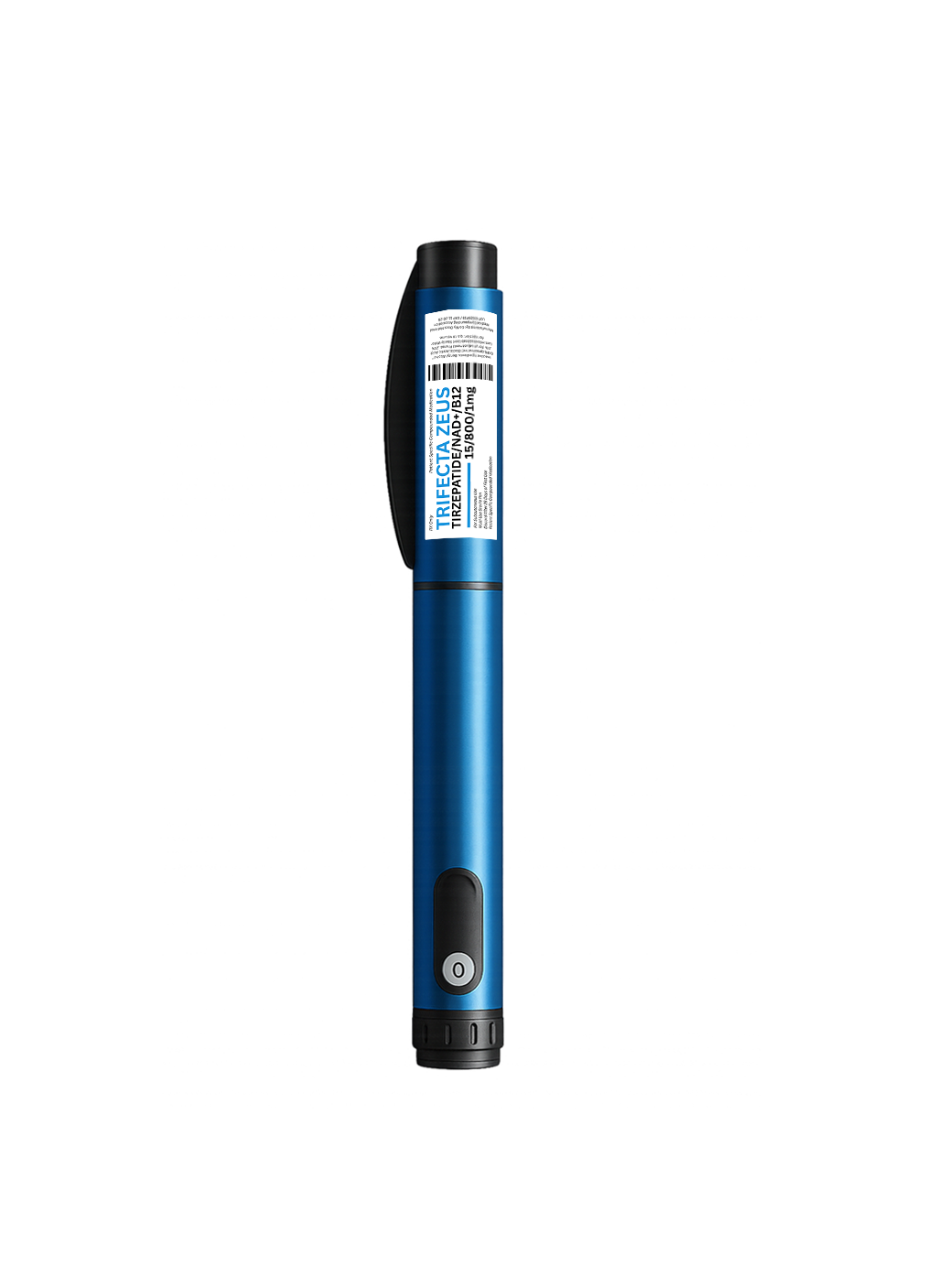Quick recap: NAD+ (nicotinamide adenine dinucleotide) is a helper molecule your cells use for energy and repair. While it isn’t a sleeping pill, healthy NAD+ levels appear to support the systems that make good sleep possible—like steady energy production, circadian timing, stress resilience, and nighttime cellular maintenance. People often describe more consistent sleep quality, easier morning wake-ups, and fewer mid-afternoon slumps when the broader lifestyle picture supports NAD+ balance. The most reliable gains come from combining smart habits (light, movement, nutrition) with approaches that maintain NAD+ as you age.
The Short List: Potential Sleep-Related Benefits of Supporting NAD+
- Helps cells make steady energy, which can reduce “wired-and-tired” nights and groggy mornings.
- Supports circadian rhythm signals that tell your brain when to feel sleepy or alert.
- Works with sirtuin enzymes that regulate cellular repair, often scheduled at night.
- Assists stress response systems, potentially easing nighttime over-arousal.
- May help keep inflammation in check, which can otherwise disrupt sleep continuity.
- Supports metabolic flexibility so late-night blood sugar swings are less likely to wake you.
- Backstops mitochondrial function, which underpins deep, restorative sleep architecture.
NAD+ in Plain English
Think of NAD+ as a universal “power adapter” inside your cells. Every time you convert food into usable energy (ATP), repair DNA, or tidy up damaged parts, NAD+ is involved. Your body makes NAD+ from vitamin B3 family nutrients and recycles it constantly. Levels naturally decline with age and can dip faster with chronic stress, poor diet, low activity, and irregular sleep. Because sleep is when your body prioritizes maintenance—not just rest—having enough NAD+ on board can make that maintenance run more smoothly.
How NAD+ Touches the Sleep System
1) Energy That Matches the Clock
Great sleep starts long before bedtime. If your energy is spiky during the day, your brain may push out alerting chemicals late in the evening to keep you going—exactly when you need to wind down. NAD+ participates in the electron transport chain (the cellular machinery that makes ATP), helping energy production feel more like a gentle wave than a roller coaster. When daytime energy is steady, the transition to sleep tends to feel natural. In the morning, adequately fueled mitochondria help you wake feeling more refreshed and less tempted to snooze repeatedly.
2) The Body’s Clock (Circadian Rhythm)
Your internal clock coordinates body temperature, hormone release, digestive rhythms, and sleep–wake timing. NAD+ levels naturally fluctuate across the 24-hour cycle and interact with “clock genes” that orchestrate these daily patterns. Imagine a well-tuned orchestra: if the conductor (circadian rhythm) and the section leaders (cellular energy signals) are in sync, the performance (your day) sounds great and the intermission (your night) is calm and restorative. Supporting NAD+ won’t replace healthy light exposure or regular routines, but it can help the cellular “section leaders” respond to the conductor’s cues.
3) Nighttime Repair and the “Housekeeping Shift”
Sleep gives your body a maintenance window: damaged molecules are cleared, DNA errors are corrected, and membranes are rebuilt. NAD+ activates enzyme families (like sirtuins) that manage many of these tasks. When NAD+ is plentiful, the “night crew” can repair wear-and-tear more efficiently. Over time, smoother repairs can translate into more stable sleep architecture—more time in deep, slow-wave sleep and fewer micro-awakenings caused by physiological stress signals.
4) Stress, Mood, and Over-Arousal
One of the fastest ways to ruin a bedtime is to bring the day’s stress into the night. NAD+ participates in pathways that help cells cope with stress and redox (oxidative) load. While it won’t make life less demanding, better cellular stress handling can blunt the “tired but wired” feeling—helping your nervous system shift from “go” to “restore.” People often notice that when daytime stress physiology is better managed, sleep latency (time to fall asleep) improves.
5) Inflammation and Sleep Continuity
Low-grade, chronic inflammation can fragment sleep and reduce time in deep stages. Because NAD+ helps power the systems that maintain cellular health and order, supporting it can indirectly reduce the inflammatory “background noise” that disrupts sleep. The result you notice is less tossing and turning and fewer wake-ups after you’ve fallen asleep.
6) Metabolic Stability Overnight
Blood sugar dips and spikes are a sneaky reason people wake at 2–3 a.m. NAD+ underlies metabolic flexibility—the ability to comfortably switch between burning carbohydrates and fats. That flexibility can smooth out nighttime fuel delivery to the brain. In practice, this may look like fewer early-morning wake-ups, less night sweating, and a more predictable wake time without the alarm feeling like an air horn.
Where NAD+ Comes From (and Why It Drops)
Your body builds NAD+ from precursors you get in food, especially forms of vitamin B3 such as niacin, nicotinamide, and the modern darlings nicotinamide riboside (NR) and nicotinamide mononucleotide (NMN). You also recycle NAD+ continuously in what’s called a “salvage pathway.” With age, the demand side (repair, inflammation control, mitochondrial upkeep) tends to rise, while the supply side (diet, recycling efficiency, lifestyle) can stall, leaving less available NAD+. That shortfall shows up as sluggish daytime energy, harder exercise recovery, and often, less satisfying sleep.
Practical, Consumer-Friendly Ways to Support NAD+ for Better Sleep
1) Anchor Your Light and Dark
Morning outdoor light within the first hour after waking is a powerful signal that sets the clock for the rest of your day. Aim for 5–15 minutes outside if possible. At night, dim the overheads and avoid bright, blue-heavy light for at least an hour before bed. This rhythm doesn’t just cue melatonin; it also lines up daily oscillations in NAD+-related pathways with your lived routine, making sleep pressure build more predictably.
2) Move Most Days (But Time It Right)
Regular activity encourages mitochondrial health and NAD+ turnover. Choose the time that leaves you calm at bedtime: mornings or early afternoons work best for most people. Late-evening high-intensity sessions can spike alerting hormones and core body temperature, which may delay sleep onset even if they’re metabolically beneficial.
3) Eat for Stable Energy
To give NAD+ the raw materials it needs, build meals around protein, fiber-rich carbs, and healthy fats. If late dinners bother your sleep, try finishing larger meals 2–3 hours before bed. A small, balanced snack can help if you regularly wake hungry at 2 a.m., but avoid sugary or ultra-refined options that cause rebounds later in the night.
4) Caffeine and Alcohol: Helpful Guardrails
Caffeine competes with adenosine—another sleep pressure signal—and too much, too late keeps the brain’s “alert” switch stuck. Try a personal caffeine cut-off 8–10 hours before bedtime. Alcohol may make you drowsy, but it fragments sleep and increases nighttime awakenings while pushing your heart rate up. If you drink, keep it earlier in the evening and moderate.
5) Temperature and Wind-Down Cues
A cooler bedroom (often in the mid-60s °F / ~18–20 °C) helps your core temperature drop—one of the body’s go-to sleep signals. Pair that with a consistent wind-down routine (dim lights, hot shower or bath, a book) so your brain gets multiple clear messages that “maintenance mode” is about to start. These cues strengthen the circadian rhythms that NAD+ interacts with.
6) Considering NAD+ Precursors
Some people explore over-the-counter precursors such as NR or NMN to support NAD+ levels, alongside a B-vitamin-replete diet. If you go this route, treat it like any supplement: discuss with a healthcare professional if you have medical conditions, take medications, are pregnant or nursing, or have questions about dosing and timing. Quality can vary; choose brands that provide third-party testing. Remember, supplements amplify habits—they rarely replace them.
What Improvements Might You Notice?
Everyone’s sleep story is different, but common themes when NAD+ support and sleep hygiene come together include: more consistent bedtime sleepiness, less lying awake at 3 a.m., easier wake-ups, steadier mood through the afternoon, and better exercise recovery (which often feeds back into sleep quality). If you track sleep with a wearable, you might see trends like increased deep sleep minutes, slightly lower resting heart rate at night, and fewer nighttime awakenings. Look for multi-week patterns rather than single nights; maintenance biology works on a rhythm, not a switch.
Setting Realistic Expectations
It’s important to keep NAD+ in perspective. Restoring healthy levels supports the foundations of restorative sleep, but it’s not a sedative and won’t override a misaligned lifestyle. If you’re under bright screens late at night, pounding espresso at 5 p.m., or dealing with untreated sleep apnea, you’ll only get partial results. The biggest changes happen when you align light, movement, nutrition, stress management, and sleep timing—and then consider NAD+ support as an amplifier of those good signals.
A Simple, Actionable Plan
Morning: Get outside for light, hydrate, and have a protein-forward breakfast to stabilize energy.
Midday: Add a brisk walk or workout to strengthen mitochondrial health. Keep caffeine earlier.
Afternoon: Aim for a balanced meal that avoids big sugar swings; check in with stress—two minutes of slow breathing goes a long way.
Evening: Dim lights an hour before bed, keep the bedroom cool, and use a consistent wind-down routine. If you’re exploring NAD+ precursors, follow label guidance and professional advice.
Weekly: Track just a few metrics (bedtime consistency, time to fall asleep, nighttime awakenings). Celebrate small, steady improvements.
FAQs: NAD+ and Sleep
Will NAD+ make me sleepy? Not directly. It supports the cellular conditions for good sleep rather than causing drowsiness.
How soon would I notice changes? Biology differs, but two to four weeks of consistent habits is a fair window to evaluate trends.
Can I rely on supplements alone? They’re a tool, not a cure-all. Light timing, movement, and nutrition remain the backbone.
Is it safe? Nutrient-based approaches are generally well-tolerated, but individual health histories matter. If you have conditions or take medications, talk to a qualified clinician.
The Bottom Line
Sleep quality isn’t just about feeling tired enough to crash—it’s a coordinated dance of energy, timing, and repair. NAD+ sits at the center of that dance, helping cells make and manage energy and handle their maintenance checklist when the lights go out. You can’t supplement your way out of a confused body clock, but when your daily routine supports circadian rhythms and metabolic steadiness, keeping NAD+ healthy can tilt the odds toward deeper, steadier, more restorative nights.
Disclaimer: This article is educational and not medical advice. Always consult a qualified healthcare professional about your personal health, sleep issues, or supplement choices.




